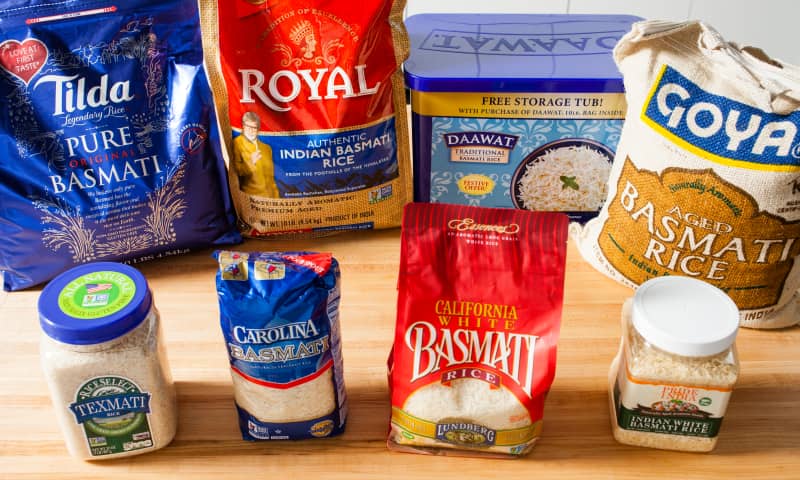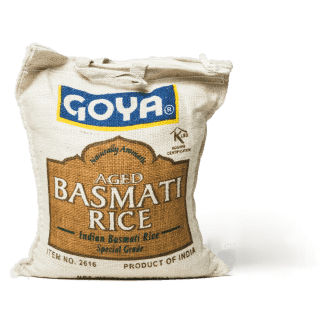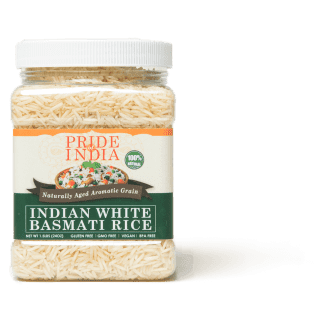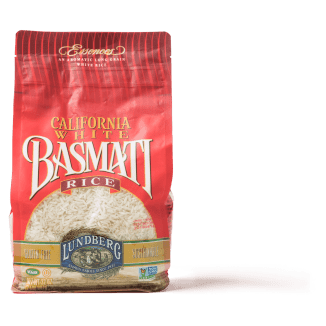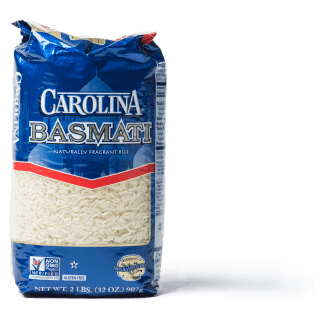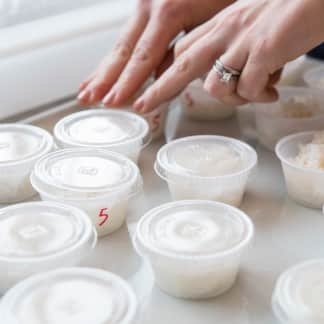In the test kitchen, we love basmati rice for its fluffy, long, fragrant grains. It’s our go-to choice for pilaf, biryani, and the classic Persian dish called chelow and as a base for curry. In India, where basmati originated, this rice is considered part of the national heritage; in 2016 it was granted Geographical Indication (GI) status, similar to the European Union’s protection for Champagne and Parmigiano-Reggiano. Indian home cooks prize basmati for its fragrance as well as the extreme elongation and slenderness of the cooked grains. But in the United States, it’s one of several choices of long-grain white rice on supermarket shelves, so it’s easy for home cooks to overlook this variety.
To learn more, we bought eight nationally available white basmati rices, two grown in the United States and six from the traditional basmati-growing regions of northern India and Pakistan, in the foothills of the Himalayas. We sampled them three ways: plain, using the stovetop directions on each package; in our recipe for Basic Rice Pilaf, where the grains are toasted in butter; and in our Chicken Biryani, which involves parcooking the rice in spice-infused water and then simmering it with layers of caramelized onions, chopped fresh herbs, and pan-seared chicken thighs. In each blind tasting, we rated the rice on flavor, aroma, texture, and overall appeal.


What Texture Is Ideal In Basmati Rice?
Tasters discovered definite differences, and texture had the biggest impact on our preferences. Some products’ grains were extremely long and slender, while others were thicker and shorter, or as one taster wrote, “more like regular long-grain generic stuff.” Some seemed to have a higher number of broken grains. Our tasters liked grains that were smooth; some rices seemed “rough” and craggy. A few were quite soft, with tenderness that verged on “mushy,” while our favorites retained some springiness and “al dente” firmness. Finally, our preferred rices were separate and fluffy, with very little of the stickiness we found in lower-ranked rices.
To understand these differences, we investigated factors that can change basmati’s texture. As it turns out, no matter how carefully you cook your rice, some characteristics are out of your hands even before you bring it home. Variety and climate make a difference. Technically, only basmati from the traditional growing region of Northern India and Pakistan can be called basmati. And though the temperature and soil of the GI region may be ideal for producing quality rice, basmati is naturally delicate and low-yielding, which makes it labor-intensive and costly to produce. To bring down prices, many producers around the world have attempted to breed higher-yield, hardier basmati, but with mixed results. We tasted two of these in our lineup; our panel noted that these basmati-like rices grown in Texas and California (labeled “Texmati” and “California basmati,” respectively) were shorter, broader, and stickier.


Aging Is Important
Processing is another factor in the finished rice. After harvesting, basmati is cleaned and dried (mechanically or in the sun, to lower its moisture level), dehusked, and polished. Next, manufacturers store it in varying conditions, from high-end temperature-controlled silos to simple covered boxes stacked on the ground, for a duration they determine. This storage period can be a form of deliberate aging to produce certain desirable qualities in the finished basmati, similar to aging fine wine or cheese; however, not all producers are willing to wait, since storing grain is expensive and increases the risk of loss to pests or spoilage. Finally, the rice is packed for sale.
We asked manufacturers about aging and found that our top-ranked rices were aged, while the three lowest-ranked products (including the domestic, “basmati-like” rices) were not. Our favorite was aged for 12 to 18 months in temperature-controlled silos; cooler temperatures help prevent off-flavors and create the best conditions for flavor and texture development during aging.

Studies report that as all types of rice age, the grain undergoes structural changes and its cooked texture becomes less sticky, smoother, and firmer. Starch granules become tighter while surface proteins on the rice grains become oxidized, creating a shell-like exterior that is more resistant to absorption, helping prevent the grain from becoming mushy and controlling how much it can expand. While raw basmati is naturally long and slim, aging improves this trait so that as the rice cooks, it expands lengthwise and not widthwise. We measured the width and length of a small sample of each rice before and after cooking and found that the aged rices were longer and thinner and grew lengthwise by a higher percentage during cooking. Low-ranked rices, which were not aged, were shorter and fatter.


As for the vaunted fragrance of basmati, our top-ranked rices were rated slightly higher for a pleasing aroma sometimes described as “buttery,” “nutty,” or popcorn-like. While basmati rice aroma has been traced to more than 100 volatile organic compounds, experts agree that the biggest source of the scent is a flavor molecule called 2-acetyl-1-pyrroline, or “2AP,” which is enhanced by long-term storage under controlled conditions.
Our Favorite Basmati
When we compared scores across our three tastings, we had a winner that performed beautifully in all our tests. Daawat Basmati Rice ($17.98 for 10 pounds) is imported from India and is one of the longest-aged rices in our lineup. Its grains were among the longest after cooking, remaining slender and intact rather than broken. Its texture was fluffy, smooth, and firm—not too soft, no matter how we prepared it. As one of the more aromatic rices in the lineup, Daawat Basmati contributed its own subtle flavor and fragrance to dishes, while other products were merely a blank slate. At about $1.80 per pound, it’s also one of the most affordable.
- Imported from India
- Aromatic
- Retains some firmness; does not become mushy
- Fluffy, not sticky or starchy
- Aged up to 2 years for flavor development and drier, smoother texture
- Grains elongate dramatically during cooking while remaining slender
- Sample plain, using manufacturer’s package instructions
- Sample in Basic Rice Pilaf using test kitchen’s preferred ratio of water to rice
- Sample in Chicken Biryani
- Measure length and width of grains with calipers before and after cooking and calculate average
